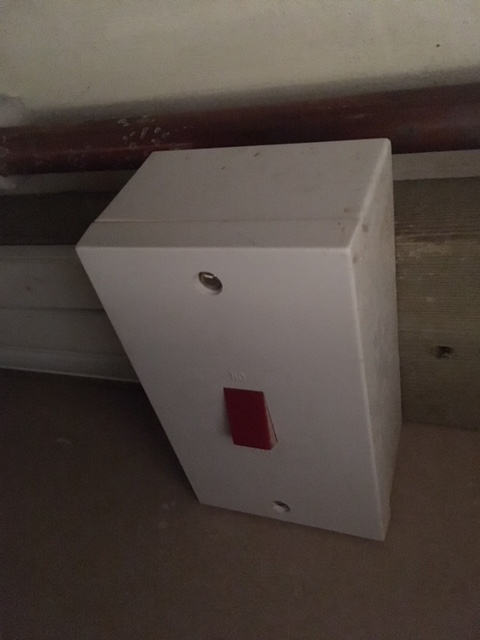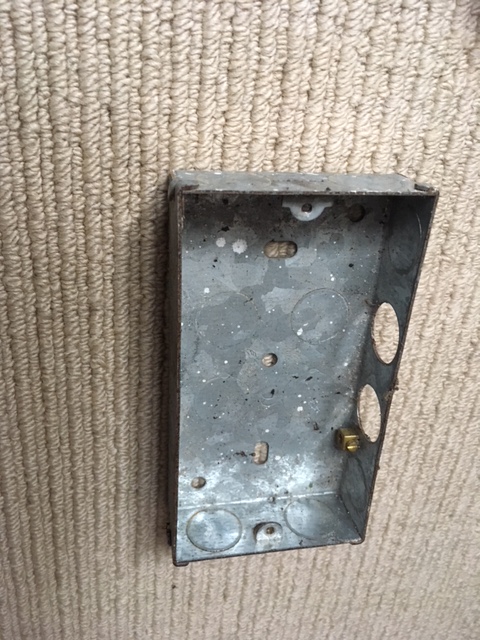Pattress
A pattress is a plywood or timber board fixed within in a partition to which equipment can be secured, such as ceiling roses, power outlets, basins, wall cabinets and so on.
Confusingly, the term ‘pattress’ can also be used to refer to a container or box (correctly described as a pattress box) that is positioned behind power sockets, light switches and other electrical fittings, and contains wiring, switches and other circuitry. This may sometimes be secured to a timber or plywood pattress.
These boxes can also be referred to as a ‘wall box’ or 'installation box' or, when it is recessed into the wall, a ‘flush box’. If it is installed within timber or plasterboard walls, it can be referred to as a ‘cavity box’,‘plasterboard box’, or 'dry lining box'.
A pattress box can be designed to be either surface-mounted, or can be recessed into a wall or skirting board.

|

|
| Surface mounted pattress box | Pattress box that will be recessed |
Pattress boxes are typically made from metal or plastic. PVC or urea-formaldehyde resin is often used for surface-mounted boxes, while thin galvanised metal is used for recessed boxes.
The generally have 'knockout' sections that can be removed as required to allow cables into the box.
[edit] Related articles on Designing Buildings
Featured articles and news
One of the most impressive Victorian architects. Book review.
RTPI leader to become new CIOB Chief Executive Officer
Dr Victoria Hills MRTPI, FICE to take over after Caroline Gumble’s departure.
Social and affordable housing, a long term plan for delivery
The “Delivering a Decade of Renewal for Social and Affordable Housing” strategy sets out future path.
A change to adoptive architecture
Effects of global weather warming on architectural detailing, material choice and human interaction.
The proposed publicly owned and backed subsidiary of Homes England, to facilitate new homes.
How big is the problem and what can we do to mitigate the effects?
Overheating guidance and tools for building designers
A number of cool guides to help with the heat.
The UK's Modern Industrial Strategy: A 10 year plan
Previous consultation criticism, current key elements and general support with some persisting reservations.
Building Safety Regulator reforms
New roles, new staff and a new fast track service pave the way for a single construction regulator.
Architectural Technologist CPDs and Communications
CIAT CPD… and how you can do it!
Cooling centres and cool spaces
Managing extreme heat in cities by directing the public to places for heat stress relief and water sources.
Winter gardens: A brief history and warm variations
Extending the season with glass in different forms and terms.
Restoring Great Yarmouth's Winter Gardens
Transforming one of the least sustainable constructions imaginable.
Construction Skills Mission Board launch sector drive
Newly formed government and industry collaboration set strategy for recruiting an additional 100,000 construction workers a year.
New Architects Code comes into effect in September 2025
ARB Architects Code of Conduct and Practice available with ongoing consultation regarding guidance.
Welsh Skills Body (Medr) launches ambitious plan
The new skills body brings together funding and regulation of tertiary education and research for the devolved nation.
Paul Gandy FCIOB announced as next CIOB President
Former Tilbury Douglas CEO takes helm.























Comments